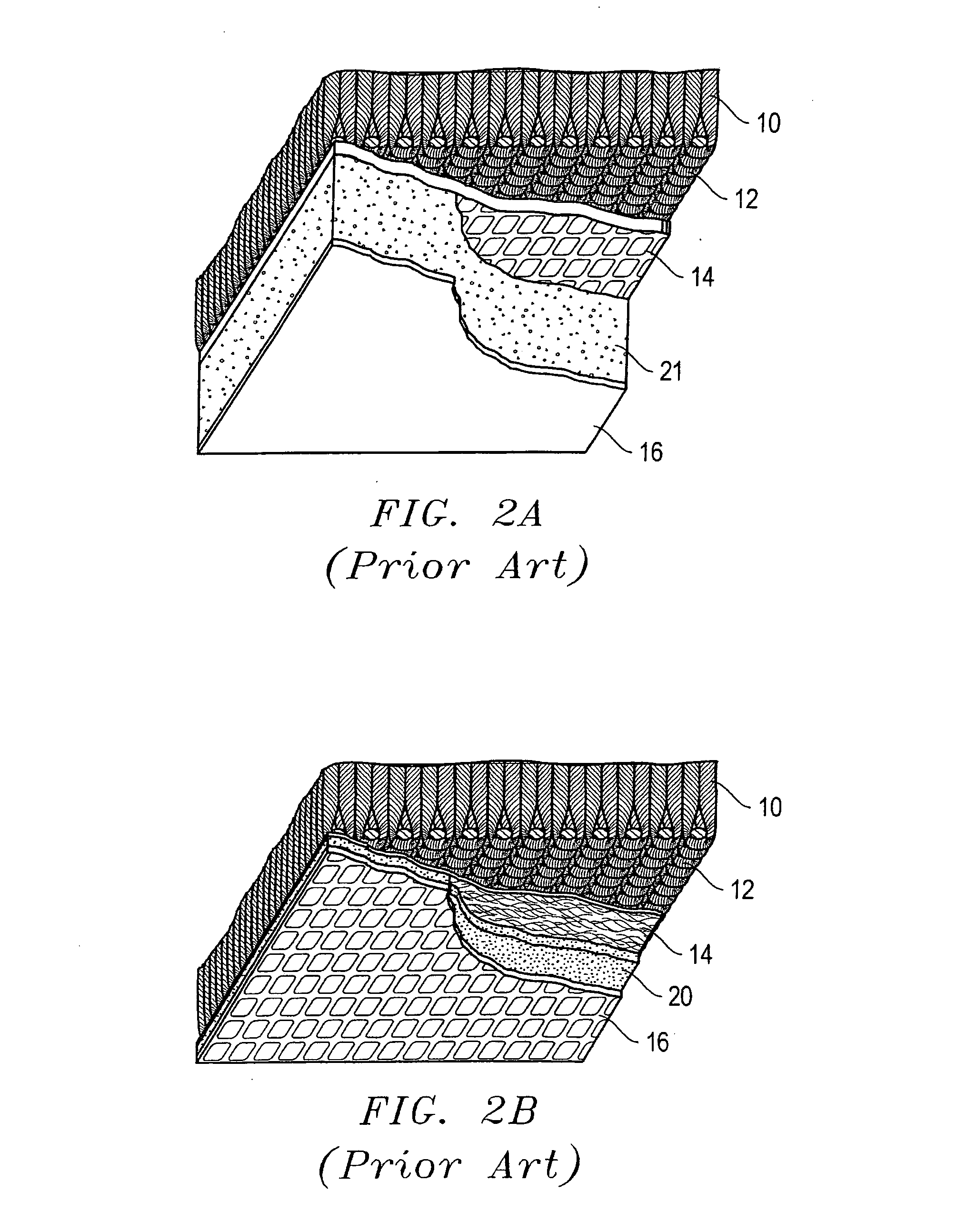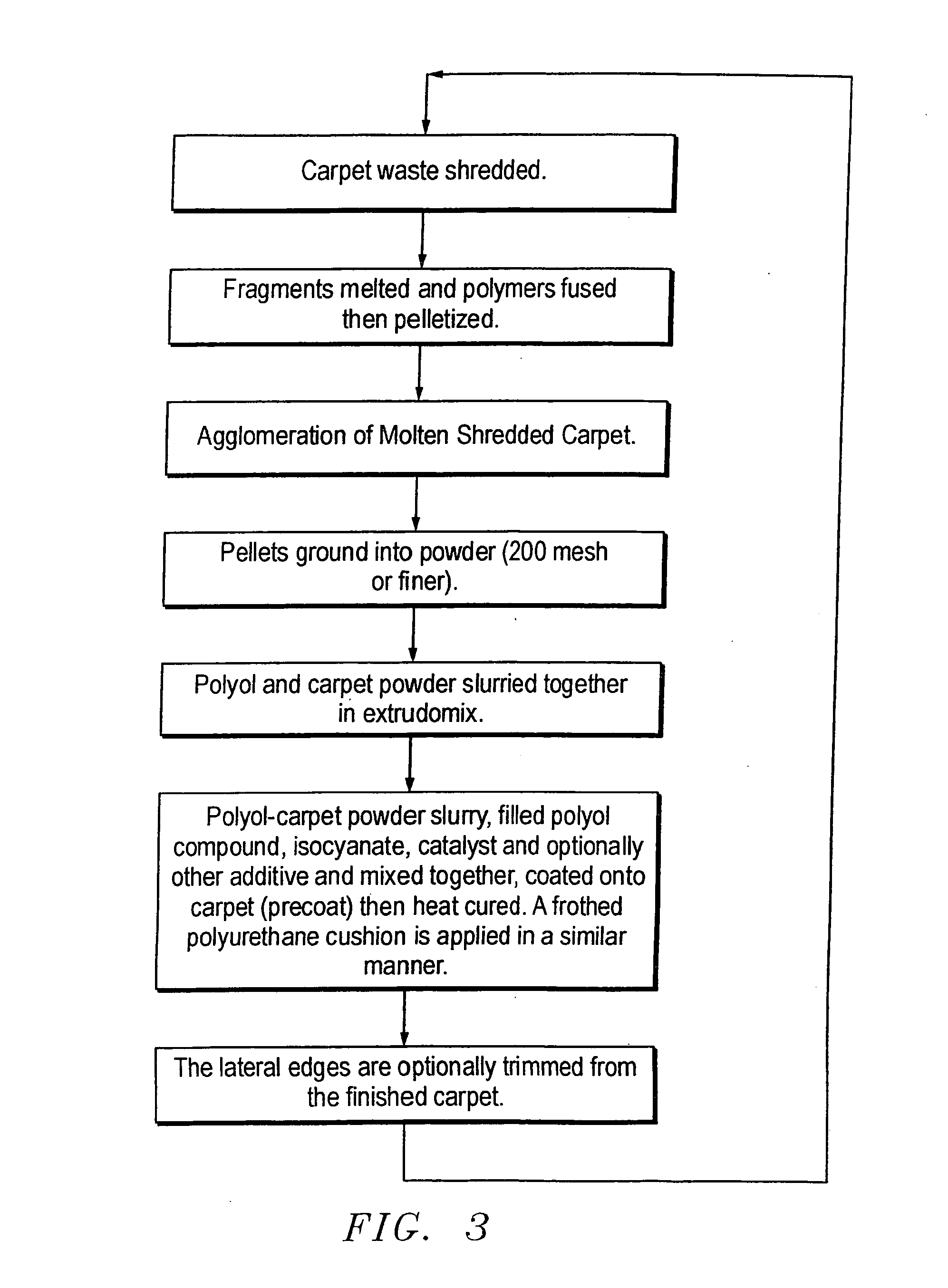Method of preparing carpet backing using recycled carpet scrap
a technology of carpet scrap and production method, which is applied in the direction of final product manufacturing, textile/flexible product manufacturing, other domestic articles, etc., can solve the problems of complex recycling efforts, process not rendering a higher percentile of conversion, and process is useful in only limited applications, so as to reduce or eliminate the dumping of carpet scrap materials and reduce the cost of producing carpets
- Summary
- Abstract
- Description
- Claims
- Application Information
AI Technical Summary
Benefits of technology
Problems solved by technology
Method used
Image
Examples
examples
[0078] The waste, previously used carpet back printed with THE EHHANCER™ Class 111 carpet backing was obtained. The carpet was composed of nylon 6,6, polypropylene, polyurethane, and polyester. The waste carpet was chopped into approximately 1-inch fragments using a Model 2442 RS 24″×42″ Cutting Chamber from Rapid Granulator. The fragments were then fused and agglomerated to approximately ⅜ of an inch using a Model CV50 Plastcompactor from Condux, Division of Netzch. The operating temperature in the extruder was approximately 150 to 200° C. The fused particles were then ground into a +80 mesh powder using the Model 2442 RS 24″×42″ Cutting Chamber. To a Hosokawa Bepex Model EM-6 Extrud-O-Mix operating at 480 rpm were simultaneously metered 1488 g / minute of Voranol® 9287 polyol (a registered trademark of The Dow Chemical Co.) and 372 g / minute of the ground carpet powder. The components were mixed in the Extrud-O-Mix to form slurry. The slurry exited the mixer into a receiver (pump) th...
PUM
| Property | Measurement | Unit |
|---|---|---|
| temperature | aaaaa | aaaaa |
| temperature | aaaaa | aaaaa |
| temperature | aaaaa | aaaaa |
Abstract
Description
Claims
Application Information
 Login to View More
Login to View More - R&D
- Intellectual Property
- Life Sciences
- Materials
- Tech Scout
- Unparalleled Data Quality
- Higher Quality Content
- 60% Fewer Hallucinations
Browse by: Latest US Patents, China's latest patents, Technical Efficacy Thesaurus, Application Domain, Technology Topic, Popular Technical Reports.
© 2025 PatSnap. All rights reserved.Legal|Privacy policy|Modern Slavery Act Transparency Statement|Sitemap|About US| Contact US: help@patsnap.com



